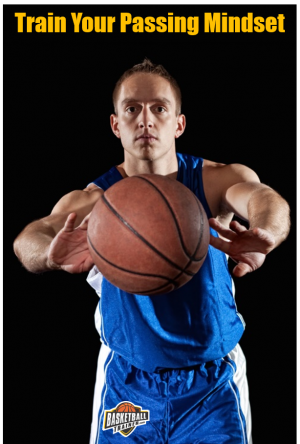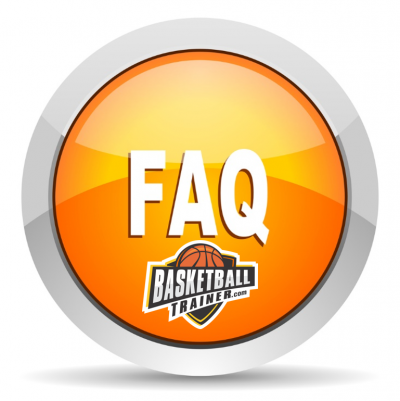 Big men, the game has changed for you. Twenty years ago you were relied on more heavily for offense and because of that were more celebrated by the viewing public. However coaches and basketball people still know how important you are to basketball teams. We still love you and value the things that you do. You are the defensive anchor, rim protector and possession finisher that teams still need to win games. And you can still be effective in today’s more perimeter oriented offensive attacks.
Big men, the game has changed for you. Twenty years ago you were relied on more heavily for offense and because of that were more celebrated by the viewing public. However coaches and basketball people still know how important you are to basketball teams. We still love you and value the things that you do. You are the defensive anchor, rim protector and possession finisher that teams still need to win games. And you can still be effective in today’s more perimeter oriented offensive attacks.
Three Tips For Big Man Basketball Training:
1. Train to Flash and Crash
If you want to keep the game easy you can think about a simple rhyme: Flash and Crash. If you’re playing in an offense that doesn’t feature getting you the ball on the low post, two great places to go get the ball are in the short corner and at the free throw line. Flashing to get the ball in these two areas gives you options as a big man. You can knock down your 15 ft jumper here. You can drive from these spots. You can even be an effective passer from these spots. From the free throw line especially you can reverse the ball to the opposite wing or look to feed a teammate close to the basket. Big men who are comfortable catching and being a scoring threat via flashing have great value, as flashing players are great at helping to beat zone defenses and getting a good look when the offense breaks down. The other part of the rhyme, crashing, is something every big man must do when a shot goes up. Although big men should look to rebound on both ends of the floor, if you can focus on “flashing” on offense and “crashing” the boards on defense you’ll be a valuable asset to your team on both ends.
2. Train On Your Two Man Basketball Game
Big man, you’re the other component in the Two Man game along with the ball handler. The Two Man game might be a part of your team offense, but if it’s not this is something else you can do to help your team when the play breaks down. The pick and roll, pick and pop, pick and slip and dribble handoff are all great options for getting someone an open look. And big men should really be familiar with executing all of these options. However you can really enhance your value if you identify which aspects of the two man game you are most comfortable with. Develop yourself as a “roller”, a “popper” or a dribble handoff threat. Big men on the college level and above usually know which of these components they’re best at and play to their strengths. You can do the same at your level.
3. Run The Floor
Do you know what running the floor means? It doesn’t just mean technically getting up and down the floor like everyone else in a jersey. Running the floor essentially means getting up the floor quickly in offensive transition, beating your man and others down to the other end. This could mean running the wing as a part of a two or three man break, or it could be mean running the pipe in a delayed break. Big men who run the floor do two very important things for their teams. One, it gives teams an opportunity to send the ball up the floor for easy scoring opportunities. As a big man you can add upwards of 4 points per game to your scoring average this way. Two, it affects the other team’s big man and overall defense. If you are constantly running in transition, you may tire the other team’s big man out as he tries to keep up with you. You may also force a lineup change. If the opposing team is not able to keep a big, plodding big man on the floor because he can’t or won’t keep up with you, how much value do you think that has for your team’s offense? If that plodding big man is a shot blocker, the impact can be huge.
Big men, if you think “flash and crash”, get comfortable with the two man game and make a habit of running the floor, you are going to make a big difference for your team. Some of these things take practice and may require you getting with someone who can teach you the finer points. But look to train and implement these basketball skills and watch your effectiveness go to another level. We can’t wait to see you dominating your basketball big man position.


 Every basketball player is susceptible to muscular imbalances simply because of the nature of the game. Hours of strength training, maneuvering laterally on cuts and explosive jumping take a toll on the muscles and joints.
Every basketball player is susceptible to muscular imbalances simply because of the nature of the game. Hours of strength training, maneuvering laterally on cuts and explosive jumping take a toll on the muscles and joints. Some of the most common basketball injuries involve the hips, knees, ankles and feet. From ligament tears in the knees, chronic ankle sprains, inflammation of the tendons in the feet and pulled hip muscles – all of these injuries can cause players to miss several games if not the rest of the season.
Some of the most common basketball injuries involve the hips, knees, ankles and feet. From ligament tears in the knees, chronic ankle sprains, inflammation of the tendons in the feet and pulled hip muscles – all of these injuries can cause players to miss several games if not the rest of the season. A strenuous basketball workout or game can really push your physical limits leaving you sore and less mobile for hours and sometimes days after.
A strenuous basketball workout or game can really push your physical limits leaving you sore and less mobile for hours and sometimes days after. Daily stretching is a practice that not only benefits your muscles, but also helps to strengthen your nervous system.
Daily stretching is a practice that not only benefits your muscles, but also helps to strengthen your nervous system.



 Part 2; “The Numbers Game,” in this 7 part series, will discuss academic and athletic scholarship options and we will begin to look at the best ways to package yourself as a basketball recruit. Subscribe to our email feed to get the other 7 parts delivered to your email inbox. This series is written primarily by
Part 2; “The Numbers Game,” in this 7 part series, will discuss academic and athletic scholarship options and we will begin to look at the best ways to package yourself as a basketball recruit. Subscribe to our email feed to get the other 7 parts delivered to your email inbox. This series is written primarily by 

 How Much Time Do You Spend On Defensive Basketball Training
How Much Time Do You Spend On Defensive Basketball Training


 A big part of the growth and development process for players is getting critical feedback from a team
A big part of the growth and development process for players is getting critical feedback from a team  Consider the Source
Consider the Source


 How to Get out of a Basketball Funk
How to Get out of a Basketball Funk


 The Meyer family just announced we have lost a legend of basketball today and that Heaven has gained a basketball angel. I have followed Coach Meyer for several years and am so thankful for his sharing of his teaching online. His teaching focused on both basketball and life lessons. The list of accolades Coach Meyer has is long including the second winningest basketball Coach in NCAA history.
The Meyer family just announced we have lost a legend of basketball today and that Heaven has gained a basketball angel. I have followed Coach Meyer for several years and am so thankful for his sharing of his teaching online. His teaching focused on both basketball and life lessons. The list of accolades Coach Meyer has is long including the second winningest basketball Coach in NCAA history.



